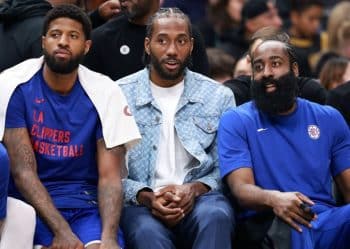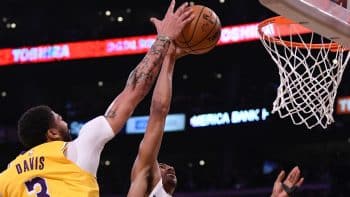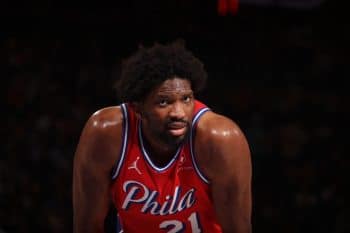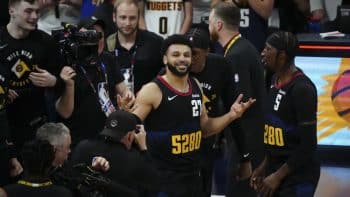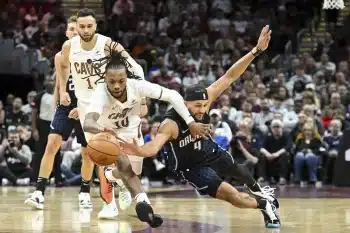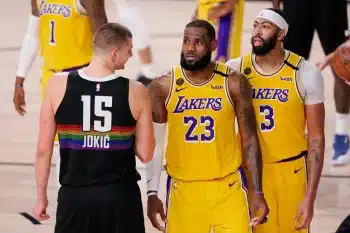NBA
NBA Daily: The Evolution of Bam Adebayo and the NBA’s Latest Frontier

Bam Adebayo’s lone season at Kentucky made it clear what role he was destined to play at the next level.
At 6-foot-9 with long arms, a chiseled physique and eye-popping athleticism, Adebayo fit the exact physical specifications required of the modern NBA big-man. What lagged sorely behind, or at least it appeared that way, was Adebayo’s skill level. He didn’t attempt a single three-pointer with the Wildcats and shot an ugly 31.1 percent from outside the paint, per Hoop Math. Adebayo’s 1-to-2 assist-to-turnover ratio didn’t inspire real confidence in his potential ability to grow more comfortable with the ball in his hands, either.
It’s unclear what the Miami HEAT forecasted for Adebayo when they plucked him with the last lottery pick of the 2017 NBA Draft. But, just over a month into his third season, Adebayo hasn’t just established himself as a foundational building block for Miami, but a perfect example of the sweeping benefits provided by a more traditional big who can function as a player far smaller on both sides of the ball.
The value of sweet-shooting interior players began to be realized league-wide in the early 2010s. It’s not like that dynamic has changed this season, even as more teams are playing two bigs simultaneously than in recent years past, either. Adebayo has played most of his minutes next to Meyers Leonard or Kelly Olynyk. Both Al Horford and Joel Embiid are comfortable from beyond the arc, as are all of the Toronto Raptors’ and Dallas Mavericks’ rotation bigs. Myles Turner and Jaren Jackson Jr. are launching threes like guards next to Domantas Sabonis and Jonas Valanciunas, respectively.
But just because spacing the floor from the frontcourt remains a mandate doesn’t mean that’s enough in an increasingly position-less league. The proliferation of playmaking bigs is basketball’s latest frontier, and Adebayo’s rapid evolution into one – after a freshman season under John Calipari that projected him as not much more than a finisher offensively – is why he’s become indispensable to Miami.
Nikola Jokic is the only true big averaging more assists per game than Adebayo’s 4.5, more than double his number from last season. He’s getting more touches at the elbow than every center but Jokic and Sabonis, while he’s second to only Julius Randle in average seconds per touch, according to NBA.com/stats.
Adebayo has also received widespread plaudits for his work on the defensive end, even making an early-season run for Defensive Player of the Year due to his peerless switchability and relentless activity. But his play on that side of the ball coupled with modest scoring totals make it easy to miss the influence Adebayo has on the HEAT’s offense.
The most telling statistic is Miami’s assist percentage when Adebayo is and isn’t in the game. When he’s on the floor, Erik Spoelstra’s squad assists on 67.2 percent of its baskets, just a hair below the Phoenix Suns’ league-leading mark. It dips nearly six points with Adebayo on the bench, a reflection of just how important a big who can shoulder some measure of ball-handling responsibilities can be in today’s game.
Adebayo’s growth into a playmaking fulcrum is no doubt especially jarring for HEAT fans who were subject to a half-decade of Hassan Whiteside starting at center. His blackhole reputation offensively is well-earned, but still largely ignores the sweeping, mitigating effects of a big man who lazes through the necessary grunt work of screening and dribble hand-offs. The Portland Trail Blazers have learned as much the hard way; Whiteside talked a big game all offseason about improving his passing, even teasing triple-doubles to come, but in place of the injured Jusuf Nurkic, one of the league’s best screeners and an underrated playmaker in space, Portland has been far more prone to a stagnant, laborious offense it mostly avoided throughout the 2018-19 season.
Likewise, just imagine how much more dangerous the Houston Rockets would be, especially under the playoff microscope, if Clint Capela was able to keep the offense flowing on the roll. Instead, he’s still limited to catching alley-oops and diving to the rim for dump-offs, ensuring defenses can pay even more attention to James Harden while protecting the arc.
Daniel Theis has surprised skeptics who believed the Boston Celtics were doomed at center, and his comfort doing the little things in Brad Stevens’ offensive system a la Adebayo in Miami is among the many reasons why. Further empowering the high-flying Robert Williams would undoubtedly raise Boston’s ceiling, but he’s still a year or two away from reaching Theis’ level as a screener and passer.
Adebayo is hardly the only big in basketball making a tangible difference through his perimeter playmaking. That’s been one of Marc Gasol’s biggest strengths for years, even before he developed three-point range. The same could be said for Horford, while Karl-Anthony Towns and Andre Drummond have made major strides in that regard. Even Rudy Gobert has gotten better reading defenses in space.
But, as the league’s emphasis on spreading the floor persists, teams would be prudent to not only draft big men who perhaps possess untapped playmaking potential, but work on developing it with incumbents and prospective free agents.
At the beginning of Adebayo’s freshman season at Kentucky, the playing style that’s made him invaluable to Miami was impossible to predict, and nothing he did over the ensuing five months made it any easier to envision.
But, just three years later, Adebayo is suddenly one of the league’s most versatile two-way bigs, even as he works to develop a workable jumper and step out beyond the three-point line. And his seemingly unlikely path to becoming that player has proved that other talented players could follow it.
